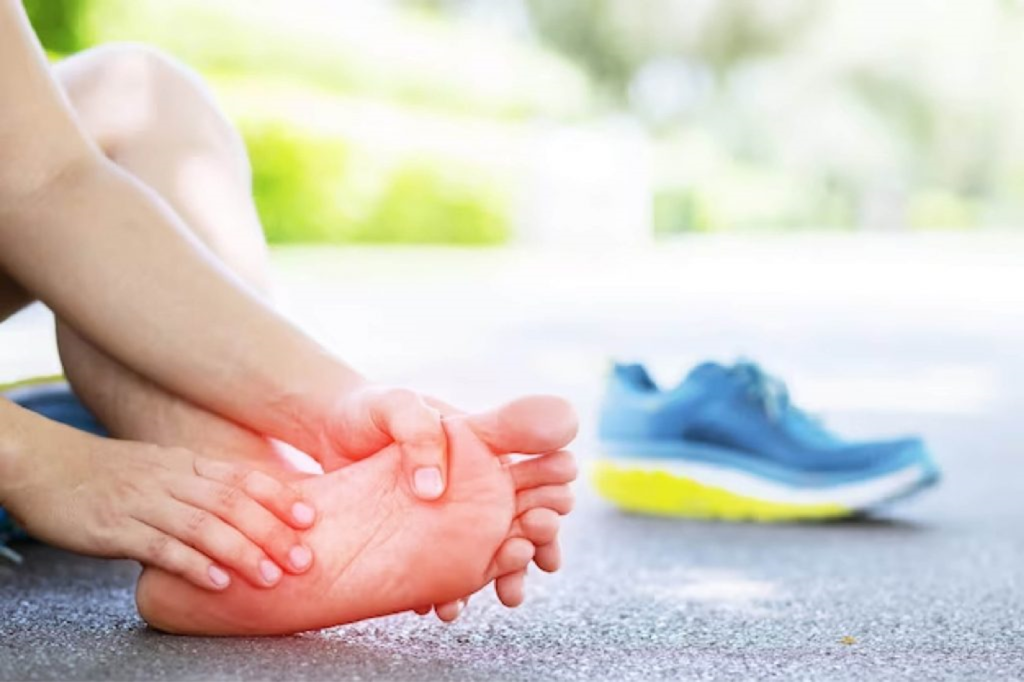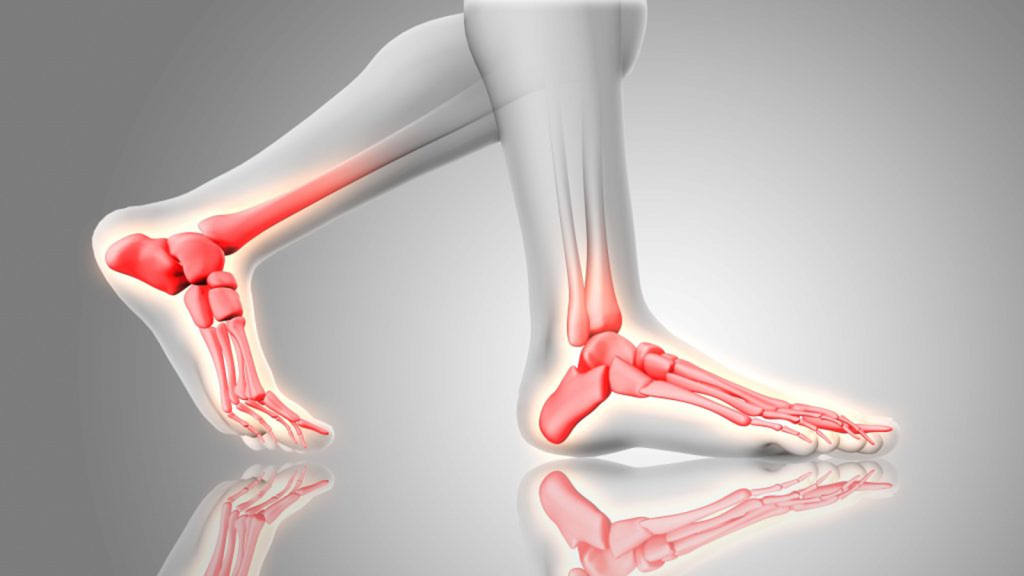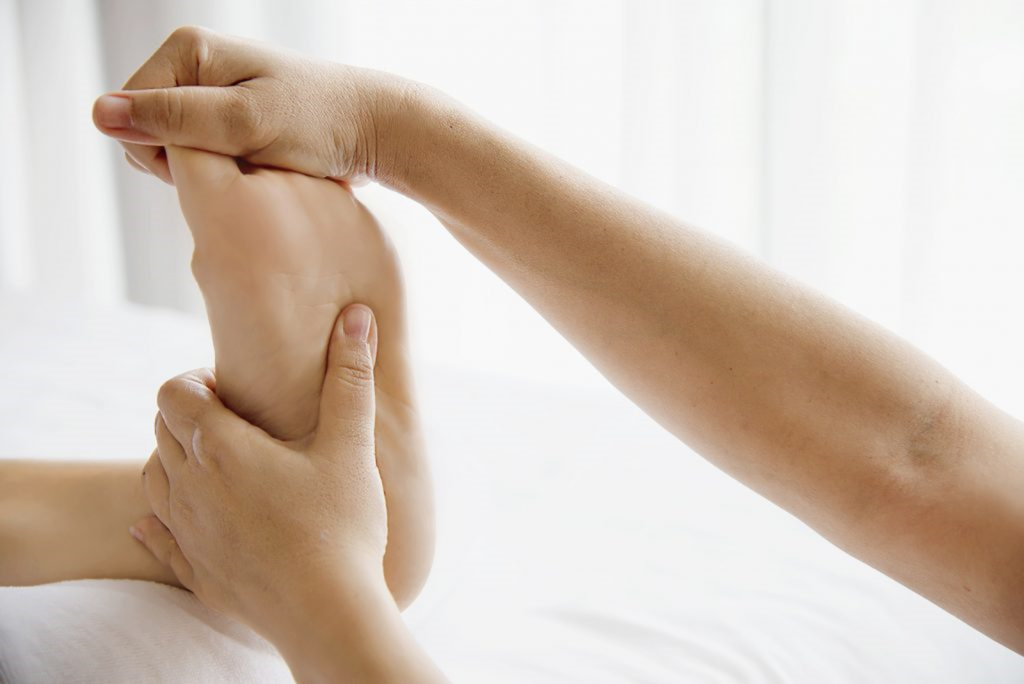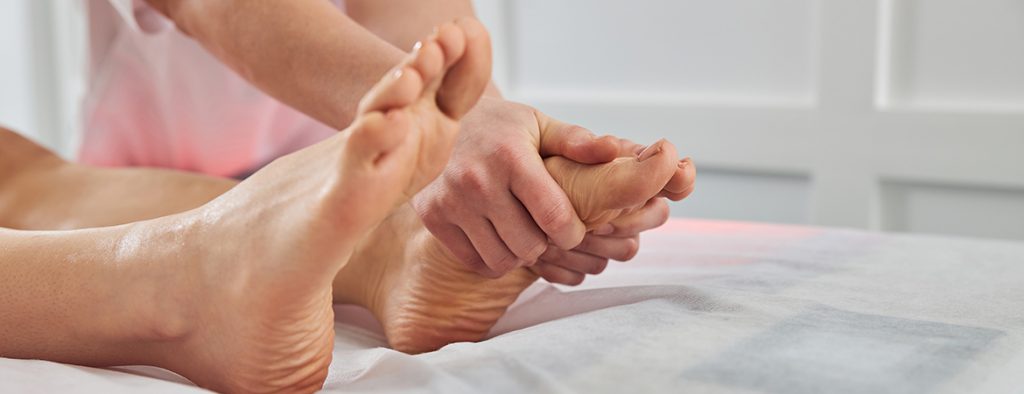Plantar fasciitis is a very common foot condition. Patients often report experiencing noticeable pain at the base of the heel, most noticeable upon waking up or stepping onto the ground after sitting for a long time. The pain may gradually subside with initial activity but recurs with continued activity. According to statistics, the prevalence of plantar fasciitis is approximately one in ten people. So, why does plantar fasciitis occur?

Plantar fascia that is constantly irritated
First, let’s understand that the plantar fascia refers to the fan-shaped connective tissue located on the sole and heel of the foot, extending from the heel to the five toes. It not only supports the body’s gravity but also protects the blood vessels and nerves in the foot. Overuse of the plantar fascia, such as prolonged standing, jumping, running, or walking, can cause repeated stress on the plantar fascia and lead to inflammation. Wearing ill-fitting shoes with stiff soles can also cause prolonged tension and difficulty relaxing the foot. Aging can also lead to degeneration of the ligaments and tendons in the foot, reducing the fat pad on the sole, leaving the body completely dependent on the plantar fascia for support. This, in turn, further irritates the hard-working plantar fascia. If these issues remain unaddressed, they can lead to pain and thickening of the tissue on the sole of the foot, resulting in plantar fasciitis. According to statistics, 60% of plantar fasciitis cases experience pain on the medial arch near the heel bone, while another 30% occur on the front of the foot.
Plantar fasciitis is one of the common causes of heel pain in adults. It often occurs in people over 40 years old and is more common in occupations that require long periods of standing and walking, and high impact on the feet, such as runners, basketball players, teachers, service industry personnel, and medical staff. The incidence rate is also high in people with congenital flat feet or obesity.

Kidney yin deficiency, malnutrition of muscles and bones
According to Traditional Chinese Medicine (TCM), plantar fasciitis can be treated through the lens of the meridians. The kidney meridian, one of the twelve meridians in the human body, passes through the plantar fascia. When the kidney meridian is deficient in Qi and blood, or when blood stasis occurs in the meridians, the tendons and bones of the feet lack nourishment, leading to plantar fasciitis symptoms of heel pain. From a TCM perspective, foot and heel pain are often caused by insufficient Qi and blood supply and stagnation in the meridians, or they may be caused by degeneration due to kidney Yin deficiency. A deficiency in vital essence can also impair Qi and blood circulation, leading to malnutrition of the tendons and bones; or foot strain can lead to blood stasis blocking the meridians.
Treatment options include a combination of traditional Chinese medicine and acupuncture, as well as acupuncture, chiropractic, and remote meridian therapy. Plantar fasciitis can have varying causes, and foot pain can be caused by a variety of factors. Not all foot pain is due to plantar fasciitis (foot pain can also be caused by degenerative arthritis, plantar myositis, neurofibroma, lipoma of the muscular layer, etc.). Therefore, it’s important to diagnose the underlying cause and choose the appropriate treatment to achieve effective improvement.
Because the lesion is located in the kidney meridian, traditional Chinese medicine (TCM) primarily uses Liuwei Dihuang Wan, which nourishes kidney qi and blood. Other herbs, such as Cyperus rotundus, Curcuma aromatica, Rehmannia root, Cornus officinalis, Paeonia lactiflora, Millettia reticulata, and Licorice root, can also be added to promote blood circulation and relieve swelling and blood stasis. Besides the kidney meridian, the bladder meridian, which serves as its exterior and interior, is also a key target. Therefore, acupuncture treatment for plantar fasciitis primarily targets Yongquan and Taixi points on the kidney meridian and Kunlun and Chengshan points on the bladder meridian. Needling distal points is also used to promote blood circulation and blood stasis, complemented by far-infrared light therapy to achieve the effects of moxibustion. Treatment also targets painful areas in the calf and plantar muscles.

Acupressure for self-care
After understanding the causes and principles, you can choose to massage acupoints for daily self-care. For example, pressing the Yongquan acupoint on the Foot Shaoyin Kidney Meridian, combined with Zhaohai, Taixi, and Fuliu acupoints on the Kidney Meridian, can be quite effective. Other common acupoints are as follows:
・Kidney Meridian of Foot Shaoyin: Yongquan, Taixi, Zhaohai, and Fuliu points
・Urinary Bladder Meridian of Foot-Taiyang: Kunlun and Chengshan points
・Shaoyang Gallbladder Meridian of Foot: Yanglingquan, Xuanzhong, and Feiyang points
・Spleen Meridian of Foot Taiyin: Shangqiu Point
・Shaoyang Triple Burner Meridian of the Hand: Waiguan acupoint

General daily maintenance principles
In addition to traditional Chinese medicine, acupuncture, and acupressure, patients are advised to regularly soak their feet in warm water, at least halfway up their calves, to increase blood circulation. They can also stretch the plantar fascia by placing the affected foot in the arch position. Regularly perform calf stretching and relaxation exercises. Avoid excessive massaging of the plantar fascia, as this can worsen inflammation.
In daily life, remember to get adequate rest. Avoid walking barefoot and choose shoes with good arch support and soft soles and heels. Reduce prolonged standing or walking, and avoid hard surfaces.
